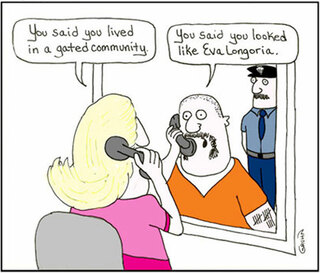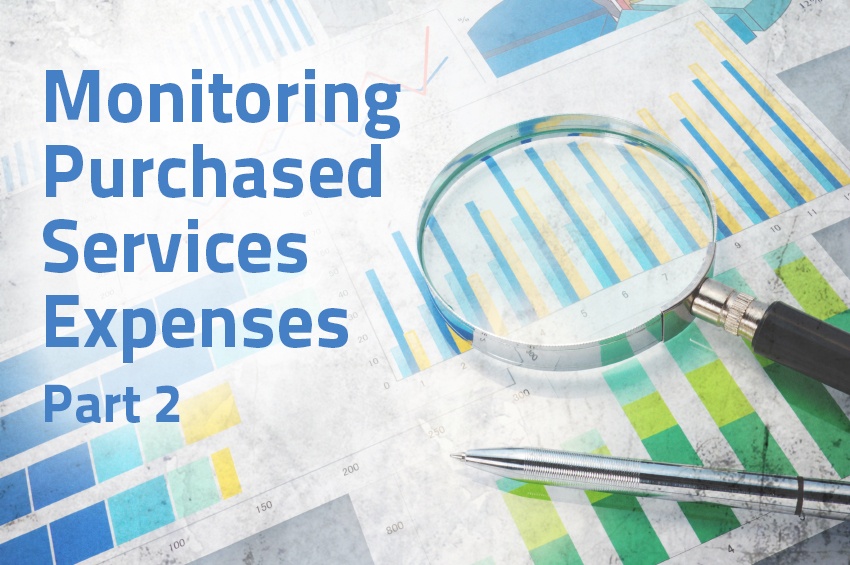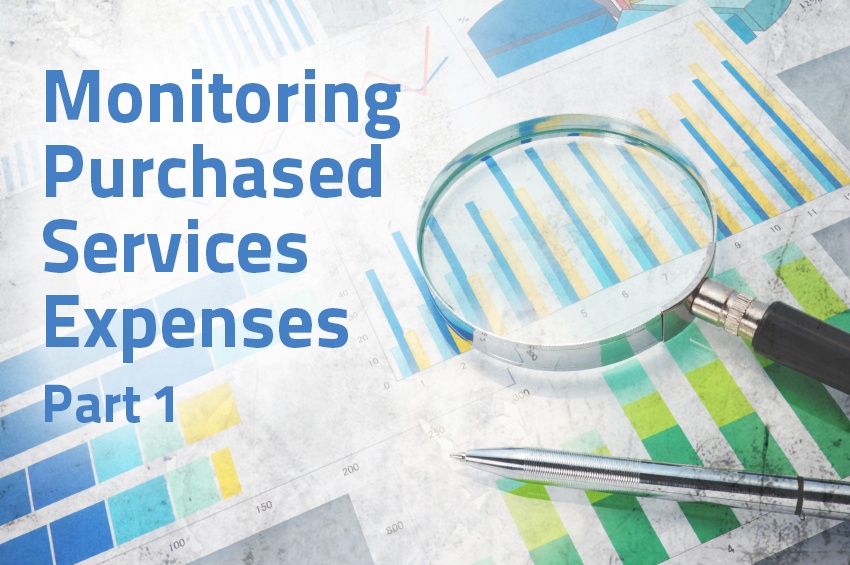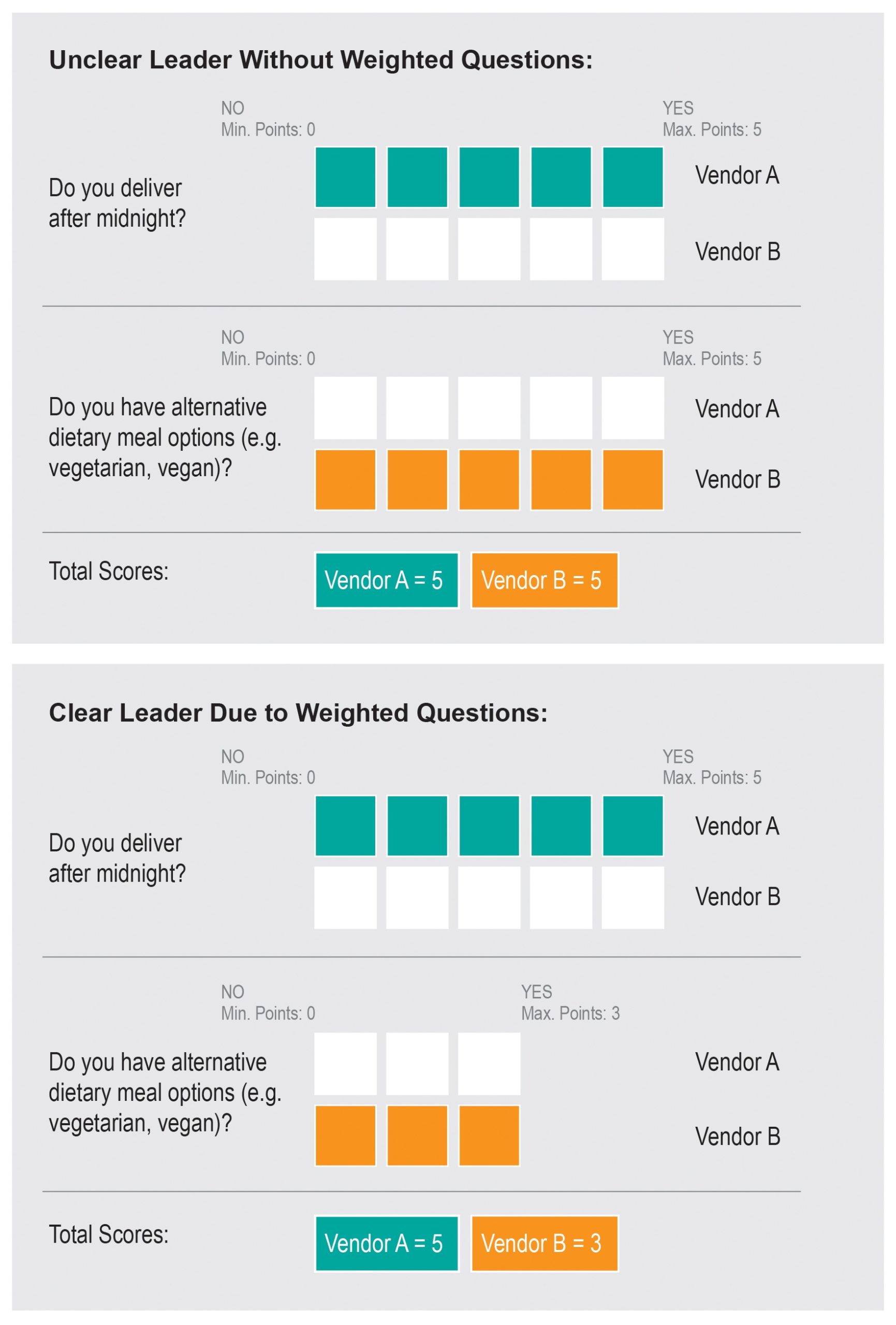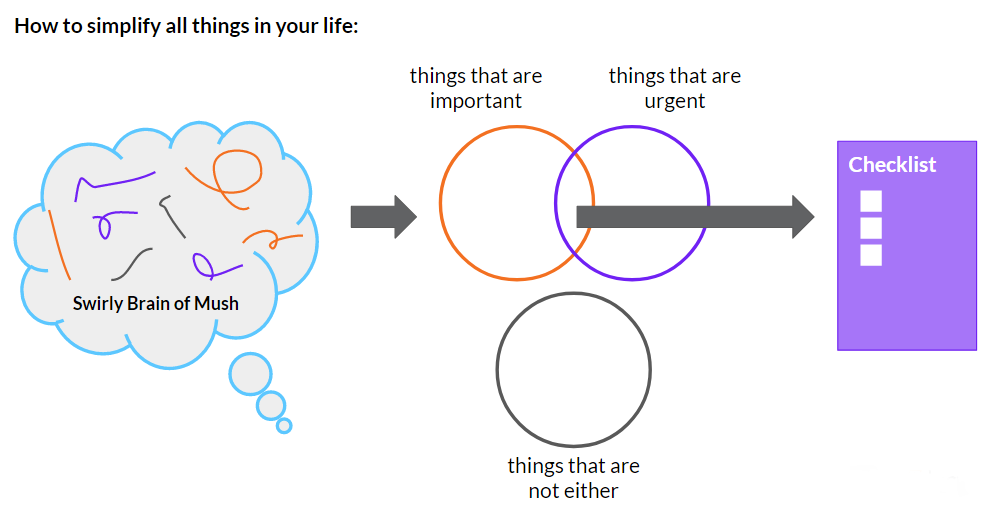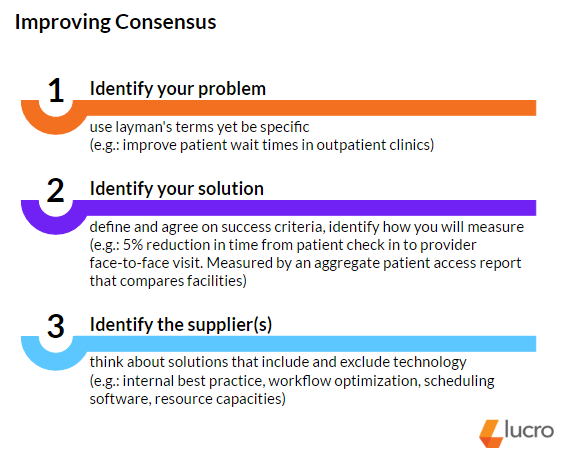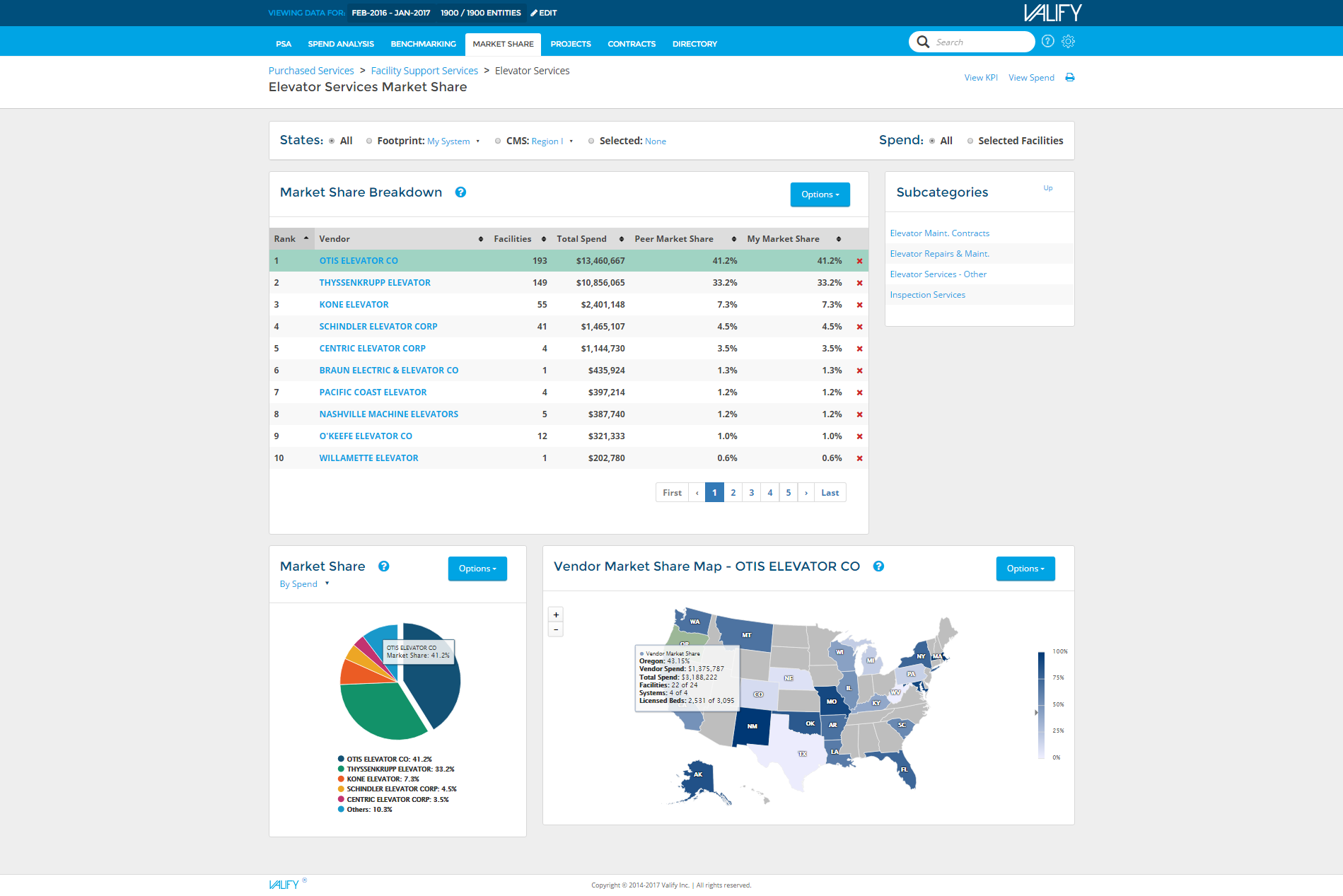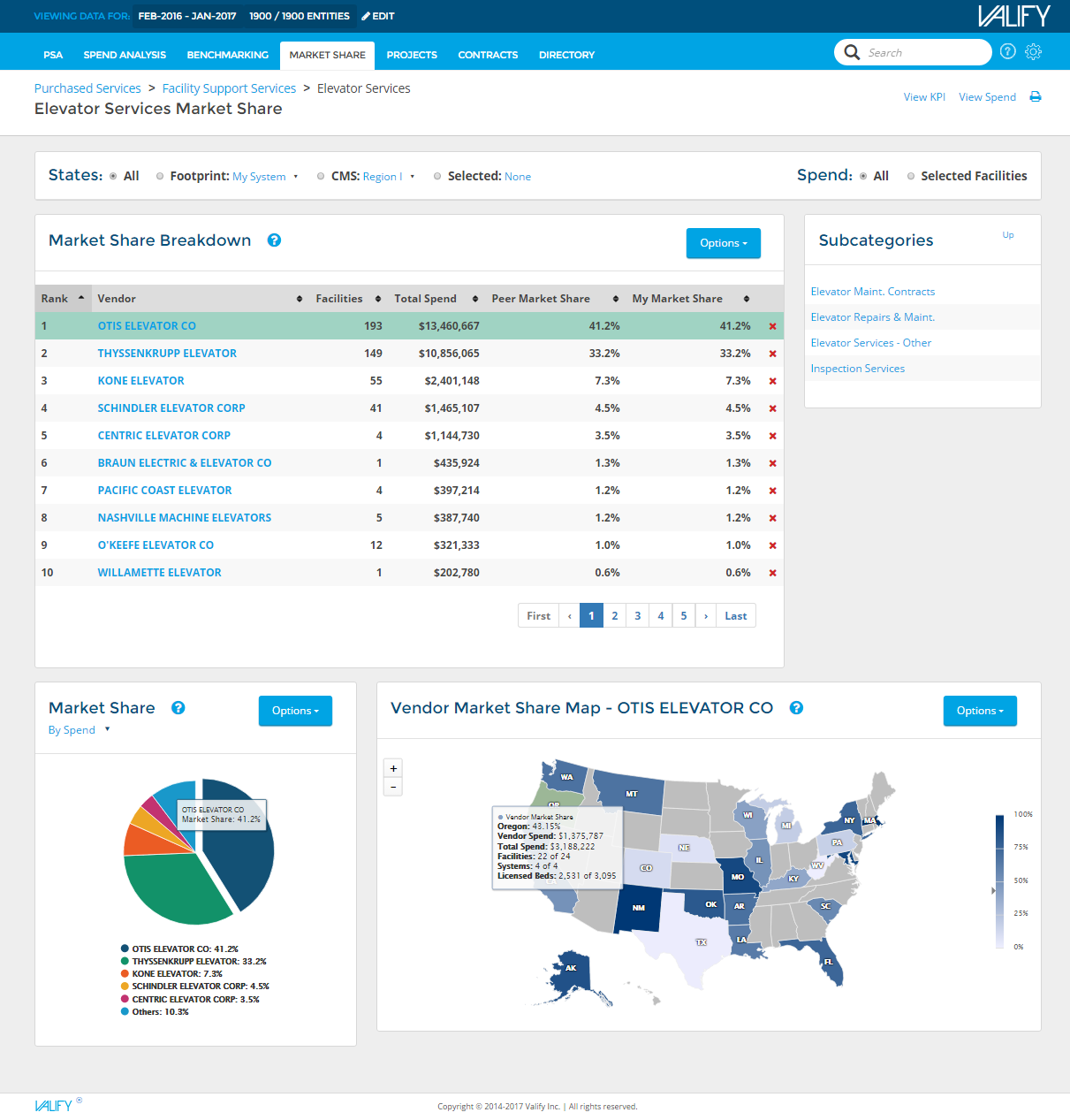
From standard purchased services categories like laundry and linen or HVAC services to seasonal/geographic driven categories such as snow plow services, there are hundreds of categories and thousands of vendors that hospitals and health systems utilize daily. Every hospital and health system is different and has unique needs based on their location and the patients they serve. Aligning these particular needs with the unique factors that pertain to each purchased services category is challenging, and most of the work that is done during the RFP process can be daunting as well.
Depending on the complexity of the category, an RFP cycle can take four to six months from start to finish and require a time commitment of 5-20% from each sourcing professional during the bidding event (Robert J. Engel. Strategic Sourcing: A Step-By-Step Practical Model, The Procurement Centre). Insight from Valify’s database shows, a typical health system’s purchased services spend is spread out, on average, across 383 individual categories (some have spend across as many has 734 categories). These figures directly correlate to the number of vendors a health care provider has on contract.
It’s fair to say that sourcing professionals spend a significant amount of time working on RFPs – including conducting research specific to each category, defining award criteria, managing vendor communications, evaluating responses, analyzing impacts, and negotiating final terms. While each of these aspects could benefit from process improvement measures, our purchased services experts have put together a list of the top three tips for accelerating the RFP process while achieving better results.
Continue reading →
